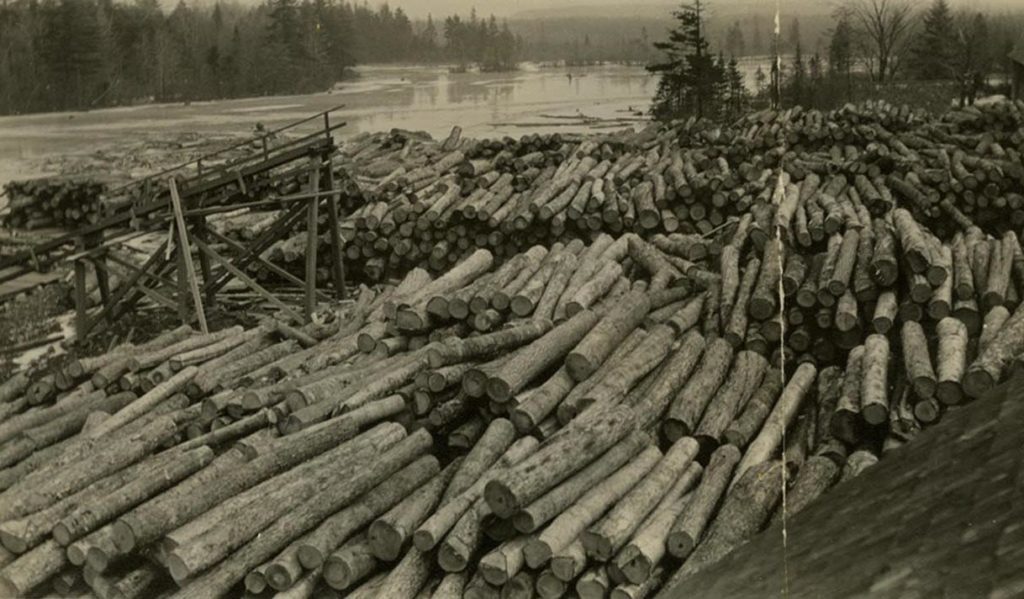Adirondack Logging Program
“TIM-BERRR!!”
Can there be a more captivating logging-language expression echoing through the forest? Probably not to the lumberjack. Many old-time “jacks” found their experiences idyllic, or at least unforgettable.
Equally memorable are the roars and purrs produced by America’s first “cat crawlers,” the early mechanical logging equipment with powerful internal combustion engines that began to build roads in the early twentieth century, replacing the old-style horse-drawn methods and beginning a new era of logging, legend, folklore, tradition, and language.
“A sturdy, hard-talking lot but with hearts of gold, men who would give you the shirt off their backs if you needed it but show you no mercy if you tangled with them. Men you’d like to know,” is the way Conse R. Delutis, a reporter for the Daily Sentinel, described the men of the camps he met when the Rome, NY newspaper sent the reporter to the Adirondack Mountains for a few days to obtain a glimpse of the great Northern New York lumbering industry in 1939.

The author’s Adirondack Logging power point program portrays the timber-logging lives of lumberjacks in the “Glory Years” following the introduction of Linn tractors. There are interviews with loggers, remembrances of lumber camp life, accounts of river drives, the passing of old-style logging with horses, remembrances of yesterday’s lumberjacks, and stories that accompany appetizing recipes any cook could prepare and serve today. Rare photographic images capture the scenes once common around lumber camps, centers of the logging industry built exclusively for the famed lumberjacks. The Sky Pilot collection illustrates how the Christian faith was brought to back-country camps and how integral it is with today’s celebrated NYS Woodsmen’s Field Days each August in Boonville, New York.
In the creation of this book and program, author William J. O’Hern gathered logging memorabilia from men and women who often had spent a lifetime in the logging industry. There are images of early mechanical logging equipment, old-time logging scenes, and personal recollections of life in the lumber shanties. Adirondack Logging not only details an informal history of the now-legendary past life of logging with Linn Tractors, but takes you into the lumber camp cook shack.

Logging, of course, is still going on. The difference is in the extent of the cutting, modern techniques and equipment and the total disappearance of the old-time practices and company-owned lumber camps.
“They were nice fellows,” former road monkey Norm Griffin told the author when they gathered to talk about his experience at Camp 9, the Gould Paper Company’s headquarters camp along the south branch of the Moose River. “We’d work for 12 hours, sometimes longer, in bitter cold winter weather. Picture a big white blanket of snow against a background of dark-green forest. In an emergency, any one of us could work 20 hours a day without a whimper, but oh boy, did I ever dream of those hula girls on the days I would tackle the most demanding jobs without complaint.” Like Norm Griffin, the men and women who worked in the lumber woods and logging camps remembered and carried their experiences throughout their lifetime.
During the winter of 1927-’28, a bit of good luck came to Watertown Daily Times reporter Robert Wells when he was invited to spend a week in the heart of a central Adirondacks lumber camp, and thus to enjoy and later report to his newspaper’s readership the very novel experience of winter life among Gould Paper Company lumberjacks. From that experience, the columnist gained a real measure of respect for the men, the labor, and the trailblazing Linn tractors during that winter week.